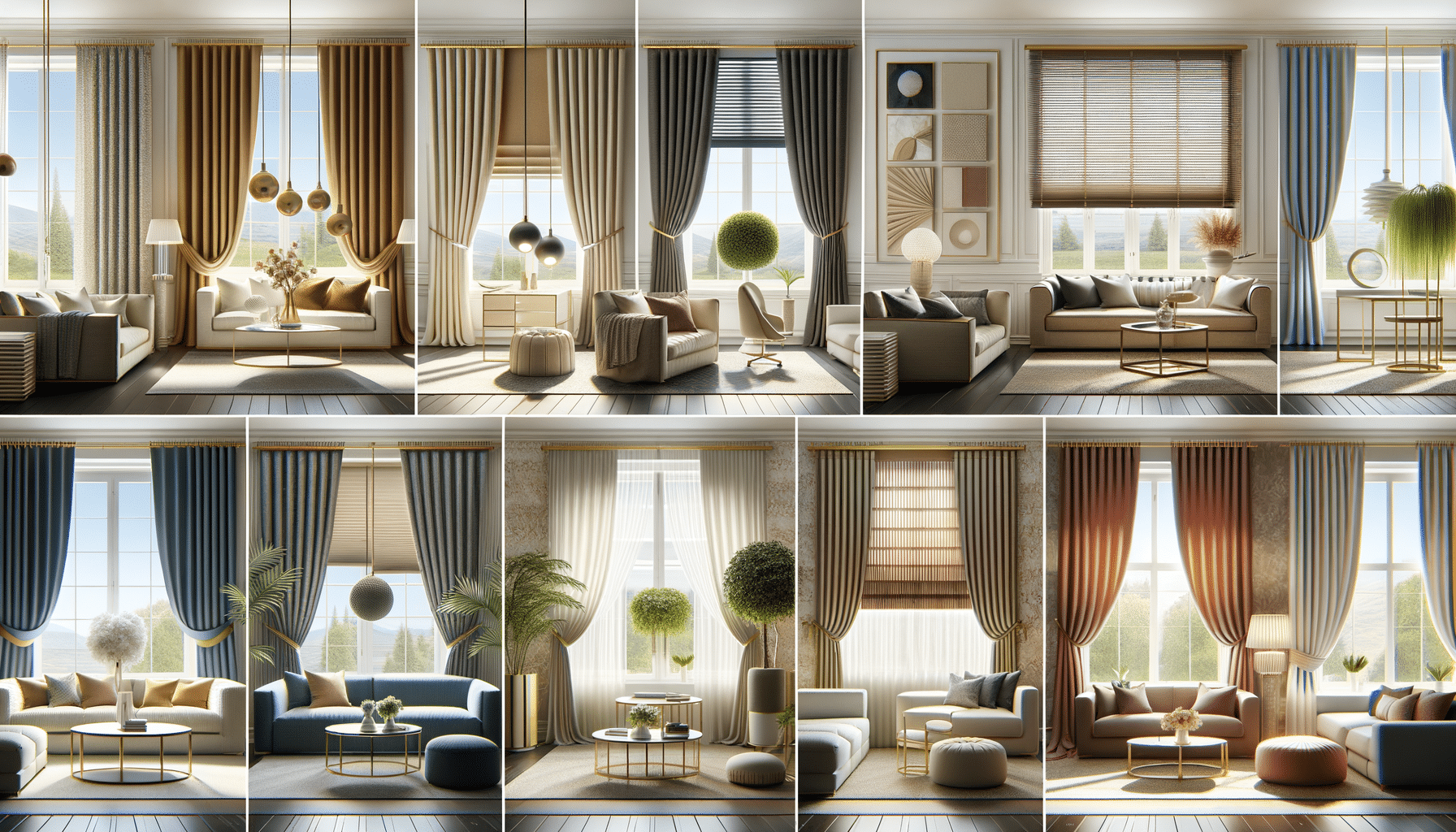
Understanding Different Curtain Options for Your Interior Design
Introduction to Window Treatments in Interior Design
Window treatments are more than just decorative elements in a room; they serve functional purposes such as controlling light, enhancing privacy, and contributing to the overall aesthetic of a space. Choosing the right window treatment can transform a room, adding layers of texture, color, and style. With numerous options available, understanding different curtain types and their benefits is essential for making informed decisions that align with your interior design goals.
Exploring Curtain Fabrics and Their Impact
The fabric of a curtain significantly influences the ambiance of a room. Heavy fabrics like velvet or brocade add a sense of luxury and can block out light effectively, making them ideal for bedrooms or media rooms. On the other hand, light fabrics such as cotton or linen create an airy feel, perfect for living rooms or kitchens where natural light is welcomed. When selecting fabric, consider the room’s function, the amount of light you want to allow, and the overall mood you wish to create.
Here are a few fabric options to consider:
- Velvet: Adds warmth and opulence, suitable for formal settings.
- Cotton: Versatile and easy to clean, ideal for casual settings.
- Sheer: Allows maximum light, creating a soft, ethereal look.
Each fabric type offers distinct advantages, and understanding these can help you choose the right material to complement your interior design.
Styles of Curtains and Their Aesthetic Appeal
Beyond fabric, the style of curtains plays a crucial role in defining a room’s character. From traditional drapes to modern panels, each style offers unique benefits and suits different design themes. For instance, pleated drapes provide a classic look that fits well with traditional or formal interiors, while grommet curtains offer a sleek, contemporary appearance.
Consider these popular curtain styles:
- Rod Pocket Curtains: Simple and elegant, great for traditional decor.
- Grommet Curtains: Modern and easy to hang, ideal for minimalist spaces.
- Tab Top Curtains: Casual and relaxed, perfect for rustic or cottage-style homes.
Choosing the right curtain style can enhance the thematic consistency of a room, making it crucial to align your choice with the overall design vision.
Functional Benefits of Different Curtain Options
Curtains are not just about aesthetics; they also offer practical benefits that contribute to the functionality of a space. For instance, blackout curtains are excellent for bedrooms as they block out light, ensuring a restful sleep environment. Thermal curtains, on the other hand, help regulate temperature, making them energy-efficient choices for homes in varying climates.
Here are some functional curtain options to consider:
- Blackout Curtains: Perfect for blocking light and enhancing privacy.
- Thermal Curtains: Help in energy conservation by insulating windows.
- Soundproof Curtains: Reduce noise, making them suitable for urban settings.
Understanding these functional benefits allows you to select curtains that not only complement your decor but also enhance the practicality of your living spaces.
Conclusion: Making the Right Choice for Your Space
Choosing the right window treatments involves a balance of aesthetics and functionality. By understanding the types of curtain fabrics, styles, and their respective benefits, you can make informed decisions that enhance both the look and utility of your interior spaces. Whether you aim to create a cozy bedroom or a vibrant living area, the right curtains can make a significant difference. Take the time to explore different options and consider how each choice aligns with your personal style and the specific needs of your space.